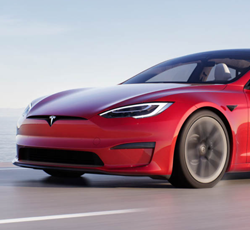
India grants licence to Elon Musk’s Starlink, opening doors for satellite internet rollout
- by Indiablooms on MSN.com
- Aug 02, 2025
- 0 Comments
- 0 Likes Flag 0 Of 5

#Starlink licence India # Elon Musk Starlink # satellite internet India # DoT approval # Jyotiraditya Scindia # India telecom growth
New Delhi: India has officially cleared the decks for Elon Musk’s Starlink to launch satellite-based internet services, granting the company a Unified Licence to operate in the country, Union Telecom Minister Jyotiraditya Scindia confirmed on Thursday.
"Starlink has been granted a Unified License to launch satellite internet services in India. Frameworks for spectrum allocation and gateway establishment are ready, ensuring smooth rollout," PTI quoted the minister as saying.
The move comes as India commemorates 30 years since its first cellular phone call on July 31, 1995.
The Department of Telecommunications (DoT) had approved Starlink’s application earlier this month, following a prolonged wait since the company first applied in 2021.
Regulatory hurdles and spectrum issues had delayed the process, but sustained engagement between SpaceX and Indian authorities paved the way for this green light.
Starlink, operated by Musk's SpaceX, will now join a competitive fieldwhere Bharti Group-backed Eutelsat, OneWeb, and Reliance Jio’s joint venture with SES are already in play.
Both rivals are also awaiting spectrum allocation.
All three players aim to deliver high-speed internet via low-Earth orbit (LEO) satellite constellations, targeting underserved and remote areas.
Minister Scindia used the occasion to reflect on India's broader digital transformation under the Narendra Modi-led government.
He noted that telephone connections now exceed 1.2 billion, while internet subscriptions have soared nearly 286% to 970 million.
Broadband users have risen dramatically—from 60 million in 2014 to 944 million today—marking a 1,450% increase.
“Data in India is now among the most affordable in the world, with rates dropping 96.6% to just ₹8.9 per GB,” Scindia said.
He also highlighted the financial revival of state-owned BSNL, which posted profits of ₹262 crore and ₹280 crore in the last two financial years after nearly two decades of losses.
The operator has rolled out over 83,000 4G sites, with 74,000 already operational using indigenous technology.
India’s 5G expansion is also progressing rapidly, covering 99.6% of districts with more than 4.74 lakh towers and a user base of 300 million.
The minister noted that India ranks among the top six countries globally for 6G patent filings and leads the world in per capita 5G usage, averaging 32 GB per user per month.
With Starlink’s entry, India is set to enhance digital access in geographically challenging regions such as border areas, mountains, and islands—places where fibre and cellular connectivity remain limited.
Starlink plans to move ahead with establishing local ground stations and gateways, pending spectrum allocation.
The development is expected to give India’s satellite communication sector a strong boost, complementing its existing mobile infrastructure.
As India marks three decades since the beginning of its mobile revolution, it now sets its sights on a digitally connected future—reaching even the remotest corners via space.
“Data in India is now among the most affordable in the world, with rates dropping 96.6% to just ₹8.9 per GB,” Scindia said.
He also highlighted the financial revival of state-owned BSNL, which posted profits of ₹262 crore and ₹280 crore in the last two financial years after nearly two decades of losses.
The operator has rolled out over 83,000 4G sites, with 74,000 already operational using indigenous technology.
India’s 5G expansion is also progressing rapidly, covering 99.6% of districts with more than 4.74 lakh towers and a user base of 300 million.
The minister noted that India ranks among the top six countries globally for 6G patent filings and leads the world in per capita 5G usage, averaging 32 GB per user per month.
With Starlink’s entry, India is set to enhance digital access in geographically challenging regions such as border areas, mountains, and islands—places where fibre and cellular connectivity remain limited.
Starlink plans to move ahead with establishing local ground stations and gateways, pending spectrum allocation.
The development is expected to give India’s satellite communication sector a strong boost, complementing its existing mobile infrastructure.
As India marks three decades since the beginning of its mobile revolution, it now sets its sights on a digitally connected future—reaching even the remotest corners via space.
Support Our Journalism
Please first to comment
Related Post
Stay Connected
Tweets by elonmuskTo get the latest tweets please make sure you are logged in on X on this browser.






 Energy
Energy

















